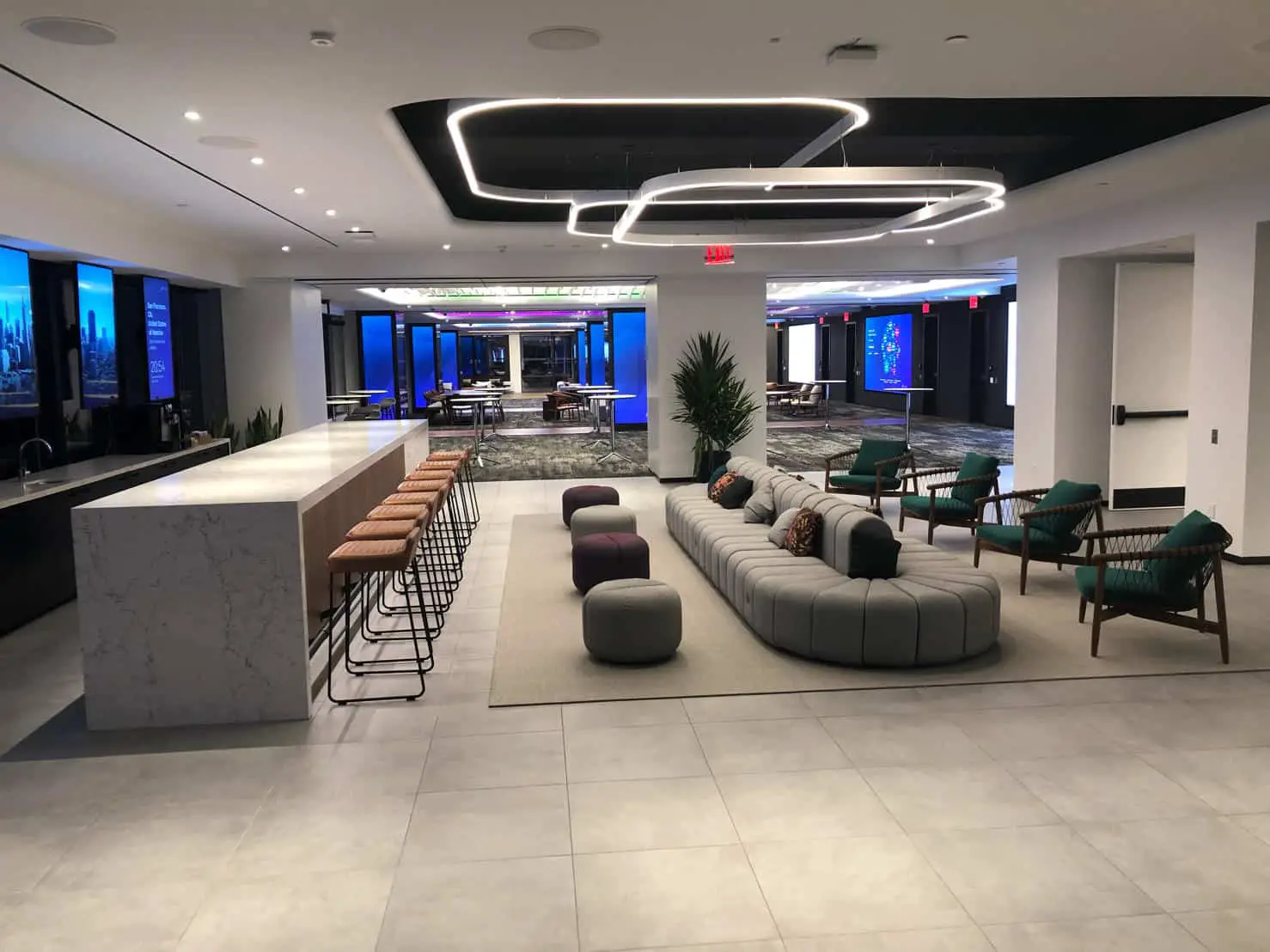A few days ago, I was visiting a friend at her workplace. It was an airy, well-decorated office space, but what made the office even more appealing was the lighting- in the common areas, the cabins, the reception and particularly the workstations. The reception area had lovely string lights and the ambience of the office looked warm and comfortable. It made me realize what a difference good lighting can make to completely transform the ambience of a place, particularly the office.
So exactly how important is lighting when it comes to office spaces, and what are some of the best practices to go about choosing and fixing lighting? Office lighting is one of the many determinants to an employee’s perception about the workplace and can enhance employee performance as well as increase the aesthetic appeal of the office. Best practices with regards to office lighting would have to adhere to safety regulations and ensure a good balance with natural light as well.
The workplace is where most individuals spend a major part of their day, anywhere between seven to ten hours five days a week. Thus, favourable working conditions are crucial for employees to give their best and to feel completely comfortable- and lighting is one of those conditions. Lighting affects ergonomics, that is, the way people perform at their workplace. In bright, good quality lighting, people are able to concentrate better on their work, while dim lighting causes tiredness and headaches. Good lighting sources have also been observed to boost the mood and thus, create happier employees.
When lighting is being chosen and fixed, different countries have differing regulations pertaining to workplace safety and working conditions, so often it is such that factors such as spacing and lighting are decided based on those regulations.
35 Office Lighting Best Practices
Office lighting is important for the health and well-being , as well as performance productivity of the employees. It has been scientifically proven that the kind of lighting used in workplaces does indeed influence employees’ work, mood and overall health over time. There are many points to keep in mind if you are in charge of choosing and getting office lighting fixed. While the chosen lighting should not be too dull or dim, they should not be harsh in brightness either- a harmony has to be found and maintained. It is often recommended that the lighting indoors in the office should be as synchronized as possible with the light outside. Further, depending on the layout of the office space, different types of lights may be needed, such as overhead lights, floor lamps etc. Although the factors determining what constitutes best lighting practices differ from office to office, here are 35 best practicies-
, as well as performance productivity of the employees. It has been scientifically proven that the kind of lighting used in workplaces does indeed influence employees’ work, mood and overall health over time. There are many points to keep in mind if you are in charge of choosing and getting office lighting fixed. While the chosen lighting should not be too dull or dim, they should not be harsh in brightness either- a harmony has to be found and maintained. It is often recommended that the lighting indoors in the office should be as synchronized as possible with the light outside. Further, depending on the layout of the office space, different types of lights may be needed, such as overhead lights, floor lamps etc. Although the factors determining what constitutes best lighting practices differ from office to office, here are 35 best practicies-
1. Before picking lighting sources and finalizing on them, it is necessary for those in charge to study the office layout and plan carefully. Otherwise, it could lead to haphazard placement of lights which would then cause more disruption in office activities- poor positioning of lighting sources is as bad as poor lighting itself.
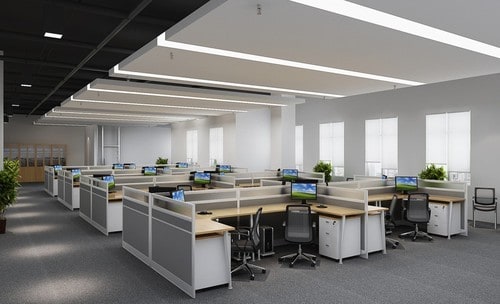
2. Ceiling lighting is one of the first concerns when it comes to choosing office lights, as these will be fixed in maximum quantity all over the office space. It is important to ensure that the overhead lights don’t have glare to them, that is, they are not overly bright. Further, the positioning of the ceiling light should not be directly over the employee’s desk- that can only be feasible if the lights are smaller.
3. Add corrective lighting as a complement so that the balance between light and shadow is maintained. Corrective lighting acts as a mediator between the different kinds of lighting and colour temperature in the office- the natural light outside, the main lighting source used at the workplace and computer/mobile screens being used there. Such lighting makes adjustments so that the employees don’t have to strain their vision and can work in better conditions.
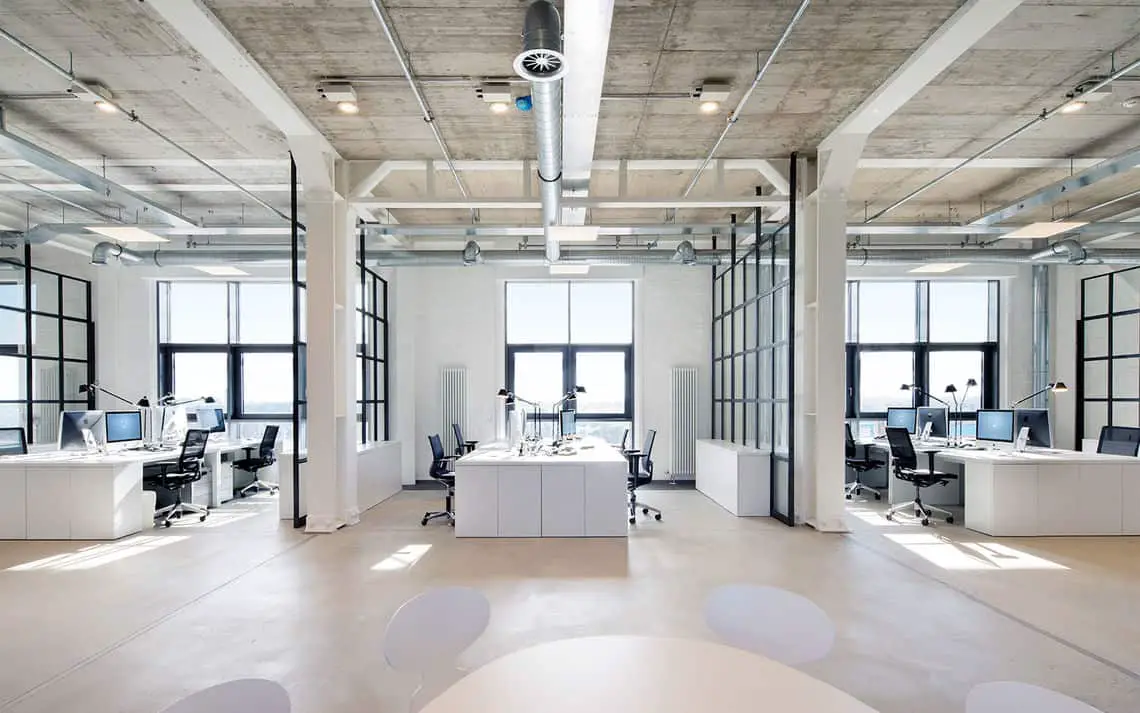
4. It is widely agreed that natural daylight is the best kind of lighting one can use for the most productive work environment. However, these days it is increasingly difficult for companies to find office spaces that are exposed to considerable daylight, so it follows that daylight-like lighting must be mimicked by closest available artificial lighting. Thus, the colour temperature of the lighting used in such offices, especially bigger and wider office spaces, should be between 5000K and 7000K, according to lighting experts.
5. It has been observed that brighter and warm, but white based lighting correlates to energy and wakefulness for employees, boosting performance and productivity, while dim lights make one drowsy and lethargic at times. The idea is to find a right balance between yellow and white lights and use lighting that falls somewhere in the middle. Dimmer lighting can always be used in recreational areas to create a more relaxed atmosphere.
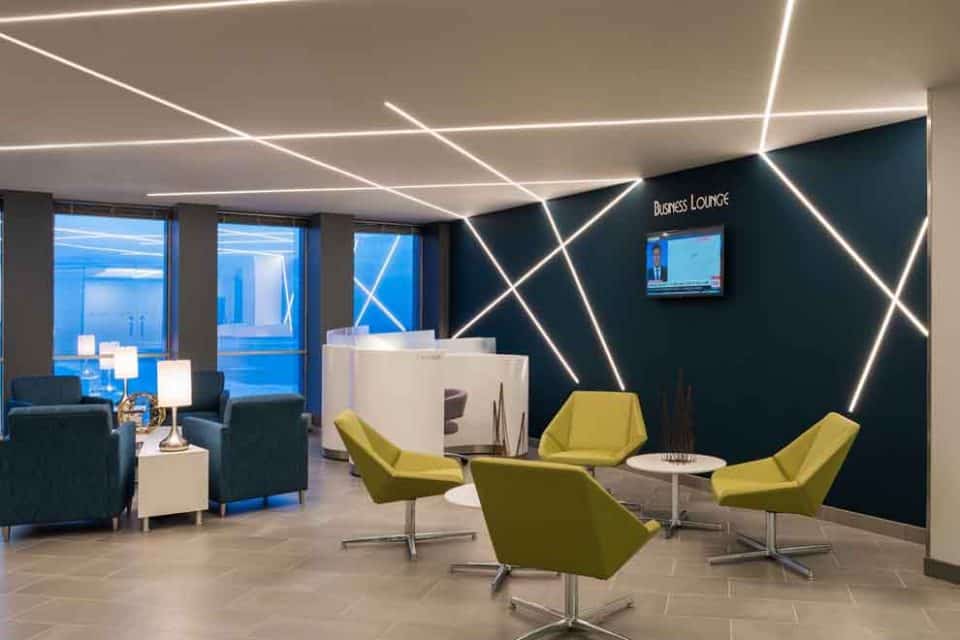
6. Even today, many offices use fluorescent lights overhead to save cost, but that is not a recommended choice. Fluorescent lighting might be a cheaper option for offices looking to cut cost, but using such lighting can come at a cost of employees’ health and well-being. Fluorescent lights are very bright and can seem rather harsh to employees with sensitive eyes and/or migraine tendencies. As such lighting hurts eyes when one is exposed to them for too long, it causes disturbance in sleep patterns and causes tiredness. Thus, such lights should be avoided.
7. If the office has a separate sitting area where guests are welcomed, perhaps it would be more aesthetically pleasing if the lighting in there is not so bright. Here, dimmer, more yellow-white-toned lights (around 2700 K) can be used to provide a calmer, more relaxed look and pleasant environment. Moreover, one can be creative with the lighting structure in such areas, including any lounges in the entire office, the cafeteria, recreation room, etc.
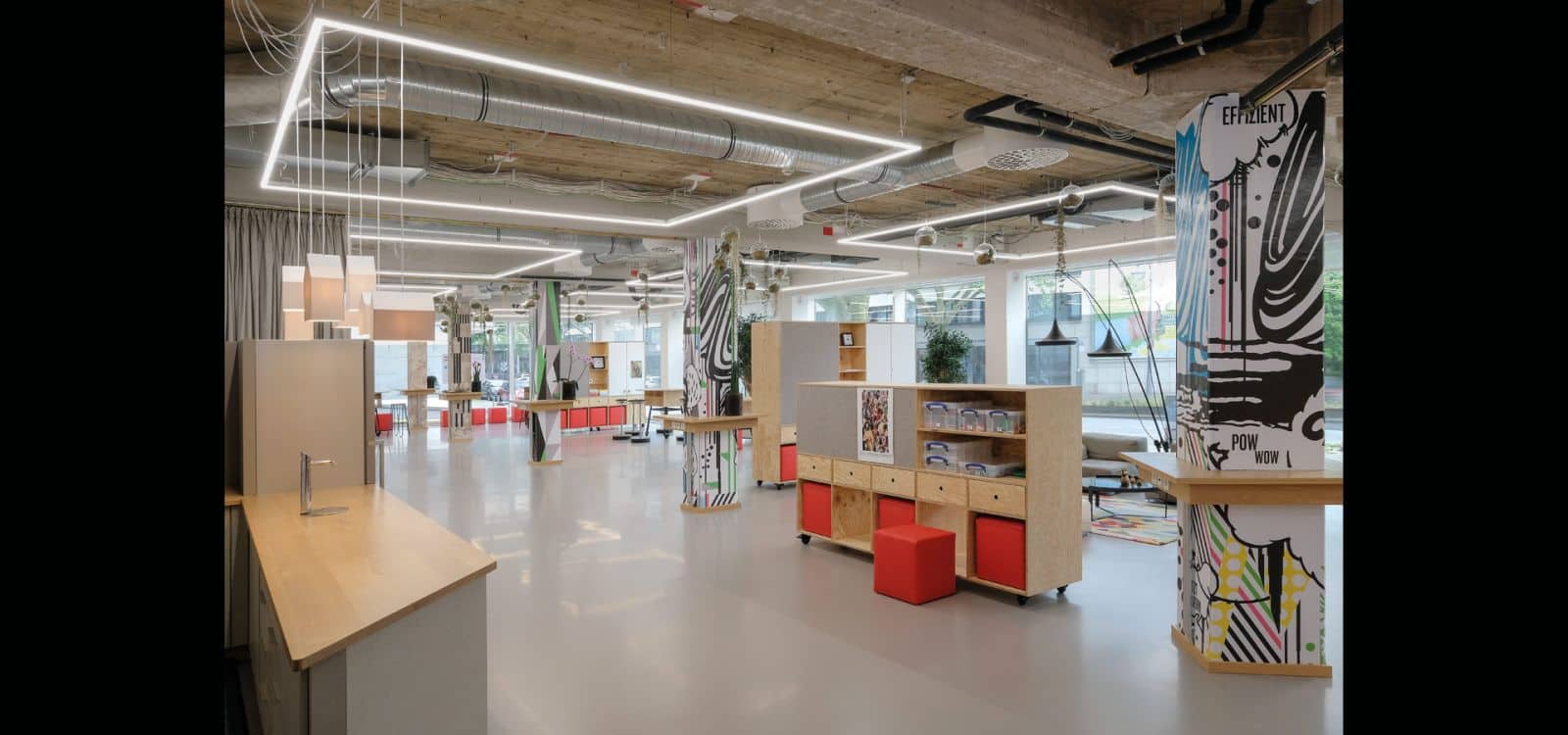
8. Always adhere to lighting regulations as defined in your country. There are regulations pertaining to the minimum amount of light that has to be present at a workplace and factors such as size of office space, location, etc are also outlined in these rules. Even if the prescribed rules for lighting in the office don’t fit your concept of lighting, work around the limitations rather than breaking them. The safety and well-being of employees is foremost.
9. Consider using task lights. In some cases, overhead lighting may not be the best option, but task lighting can salvage the situation. Task lights are small in size and the advantage is that these can be easily plugged in to outlets as convenient to the employee and their needs. Thus, these can provide concentrated light just where the employee needs some- and using such lights will also allow the employees control over where and how they would prefer lighting for their work.
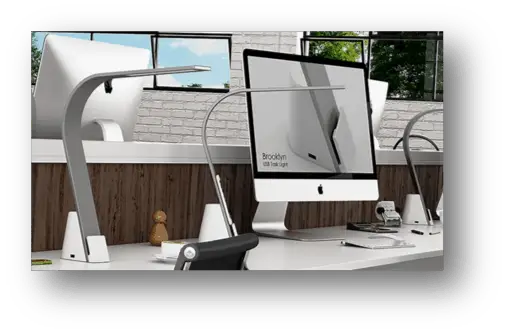
10. Remember that some types of lights heat up and cause overheating and stuffiness in the office space. This is true for smaller offices and for low quality lighting. Such lighting will probably not have a long life and may also come with other repercussions because of the poor quality. It is advisable not to use such lighting and instead, pay a little more for better quality and longer, more sustainable use, as employees will spend many hours every week in the office and should be comfortable.
11. In case a combination of natural and artificial lighting is being used in the office, it is important to make sure that the sunlight from outside does not create direct glare. If any of the desk spaces or seating areas is placed in direct sunlight, the glare will distract and hurt the employees’ eyes and if it is in close quarters, it can make them feel uncomfortably warm as well. The workstations in such a case should be placed facing the general direction of natural light, but not directly.
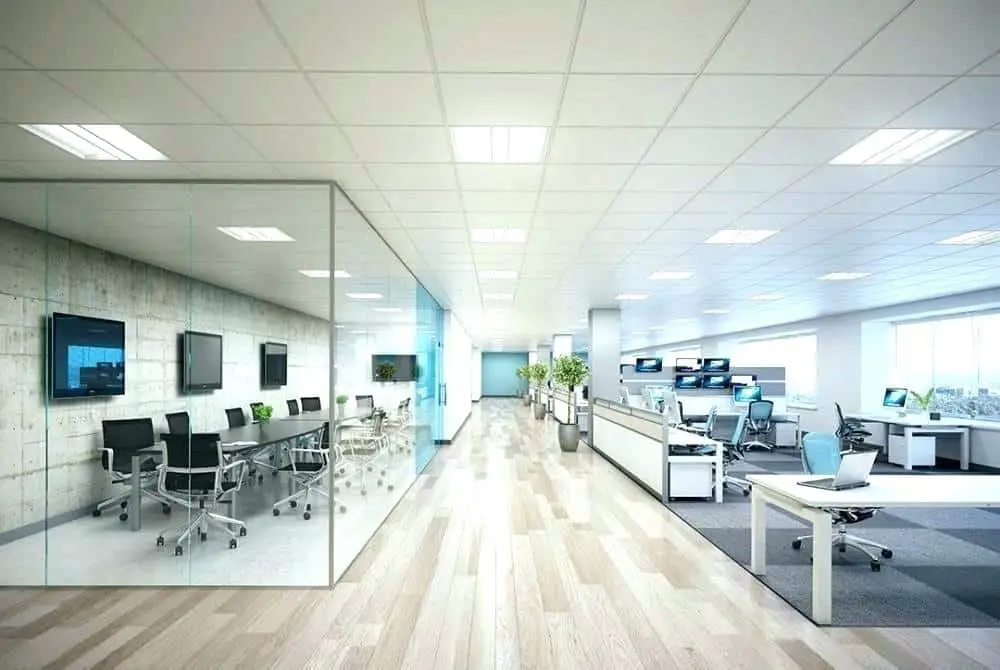
*image source – https://bannolighting.com/?msID=5be75e3a-2acd-4b6d-af50-5856128554c8
12. Different areas of the office need separate kinds of lighting. Areas such as discussion and conference rooms can use ambient lighting- not dim, but less bright than workstation lighting, as the tasks here are not likely to involve much desk work. However, such areas are important zones of the office, where meetings and important conversations may be held. Lighting does need to be paid attention to, but perhaps these zones would do with only a few lights in the form of lamps or standing lamp lights rather than traditional overheads.
13. Consider keeping table lamps as an option for those employees who would like some more light just at their desk. Many employees may be working late into the night and in that case, most of the overhead lights can be dimmed or switched off, keeping only task lights and the desk lamp on for the working members. This will also save electricity and will give employees more options to choose what kind of light they want to work in.
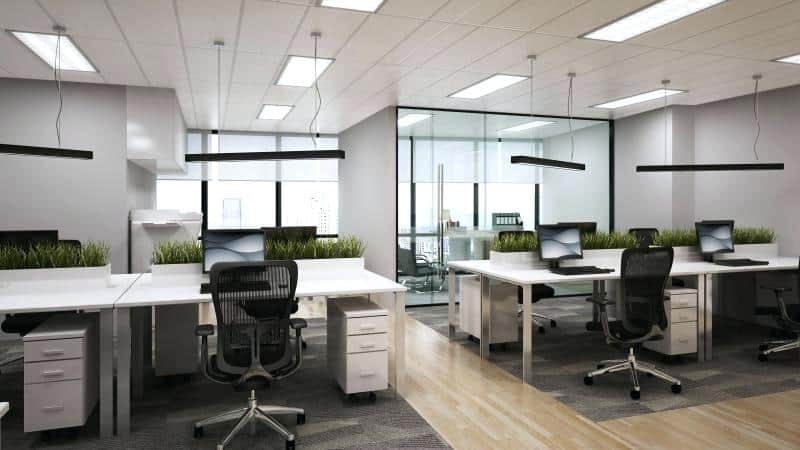
14. On darker days, such as during winter or the rainy season, when sunlight is low outside, the indoor lighting needs to be a little brighter and warmer than usual to make up for the missing light outside. This will be beneficial for employees, as the presence of substitute light will help keep energy levels high. Maintaining bright lighting will also sustain the circadian rhythm of the body and will hence avert the disruption of sleep pattern in the longer run.
15. Always be cognitive of the fact that where there is light, there will be some amount of shadow. It is important to consider where the shadows would fall and accordingly place light fixtures above or close to workstations. This is particularly true for task lights, which are smaller and angled particularly to cast light over certain points and may hence create unwanted shadows. Positioning in this case is of maximum importance and corrective lighting may be used alongside.
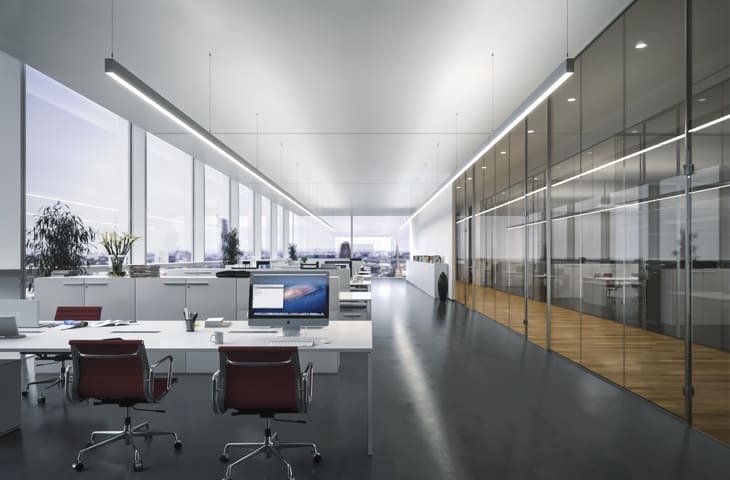
16. Consider choosing lighting that can be lowered or increased in intensity as the need arises. As evening sets in and the employees prepare to wind up their day, the lights can be lowered in intensity and set to a warmer tone to calm and relax the mind. For employees working at night, ensure that the lighting remains warm, since the computer screen already has a lot of blue light, which can disrupt the employees’ sleep schedule.
17. It will happen at some point that some of the lights will need to undergo repair. Those lights might either go out suddenly or start flickering symptomatically. But the company must ensure that these lights are repaired as soon as possible, particularly if they are placed over workstations or other places where tasks are performed regularly.
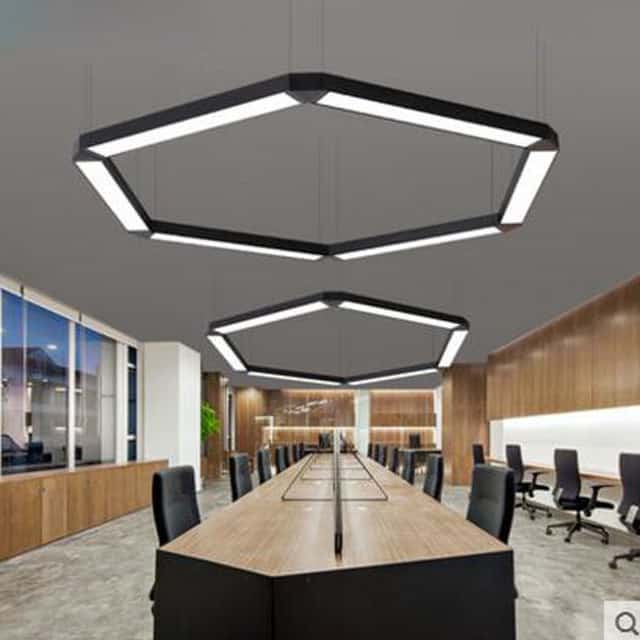
18. Another problem that can occur with old lighting and particularly CFLs is a recurring buzzing sound that can be highly irritating and distracting. Ensure that such lights are replaced quickly with LED lights, which never cause such problems. In fact, it is recommended that all lights in the office space should be LEDs for optimum performance and increased usage.
19. It is important to take employees’ feedback with regards to office facilities and factors such as seating and lighting. Lighting is particularly important to employees as they cannot perform well in very dim lighting where they cannot see well. Neither can they work comfortably in harsh lighting, particularly in case of employees suffering from headaches. Hence the company should be sure to ask the employees individually if they are comfortable with the lighting conditions and whether they are able to perform optimally in those conditions.

20 Office lighting is not just limited to overhead or desk lighting. Lighting is also used for visual appeal, particularly in corporate offices where companies would like people who visit to get a good first impression, much of which can be achieved by good lighting. Nowadays good quality LED lights are available in various shapes and forms. These can be used in visitor’s lounges and over display cases to provide stylish and beautiful lighting.
is not just limited to overhead or desk lighting. Lighting is also used for visual appeal, particularly in corporate offices where companies would like people who visit to get a good first impression, much of which can be achieved by good lighting. Nowadays good quality LED lights are available in various shapes and forms. These can be used in visitor’s lounges and over display cases to provide stylish and beautiful lighting.
21. For senior employees who have their own cabin, customizable lighting could be an option so that they can decrease the brightness or increase it as and when they need, depending on the task they are busy with. Further, perhaps the department in charge of choosing and installing the lighting could provide a briefing to these employees whenever new types of lights are fixed, which perform new functions. This will ensure that the employees understand how to use the lights and that they are used optimally.
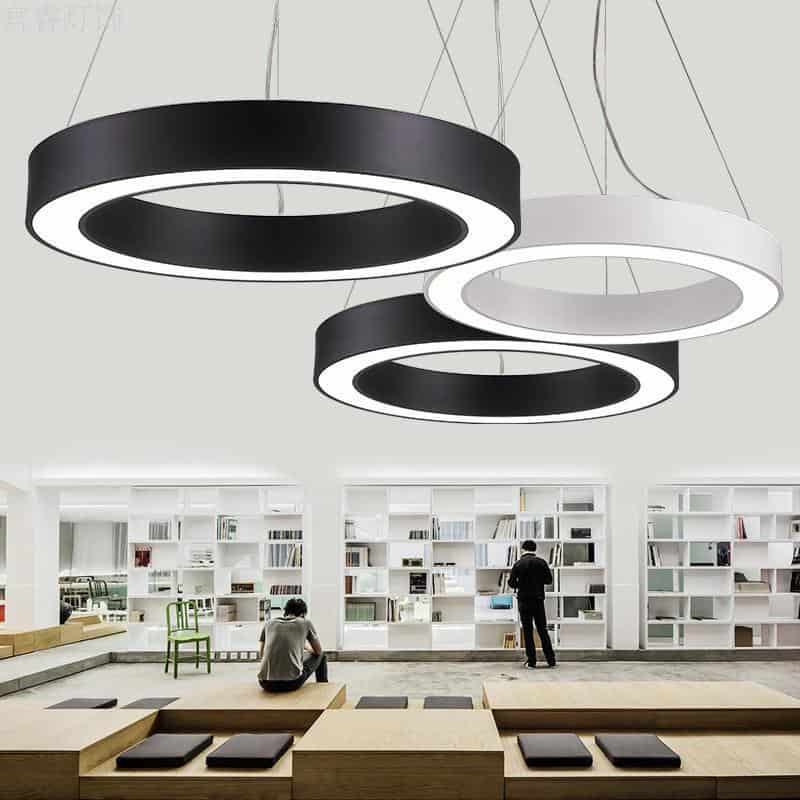
22. Another important component of lighting in any public place is safety and exit signage. An office is no different, since so many people go in and out all day long. These signs are important in case a perilous situation befalls the office, so the company must ensure that exit and emergency exit signs are always lit up and are repaired immediately in case they break down. LED signs are available in the markets now that one can easily use for this purpose- signs using these kinds of lights can last up to 20-25 years.
23. Along with indoor lighting for the office premises, outdoor lighting is another requirement one needs to keep in mind. Many offices have a wide space outside the actual office building, at the gates or the grounds if it is a large area. Lighting needs to be fixed for these areas as well, particularly the entry/exit point as well as the parking space, which should always be well-lit for employee safety.
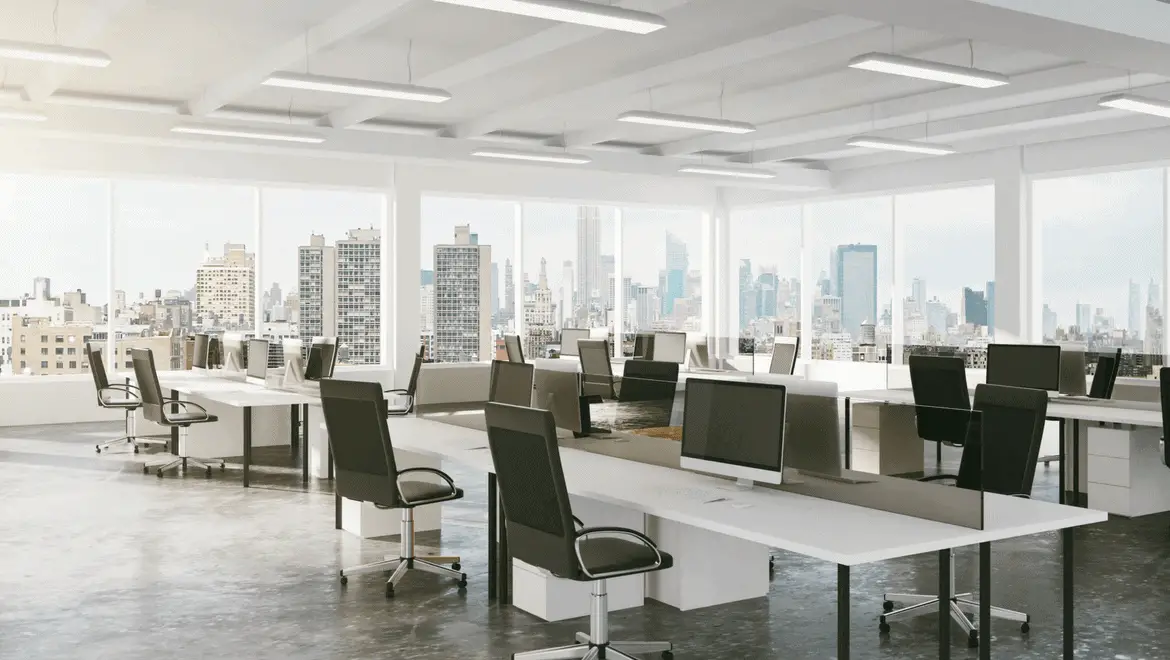
24. On the off-chance that your office is exposed to too much sunlight (albeit it would be a rare event), curtain blinds and screens can be used to filter the excess light from outside. Further, if your office has access to that much sunlight, photovoltaic sources of lighting can also be used by harnessing solar energy. Nowadays, many companies are considering moving to eco-friendly and energy-conserving options for electricity, heating and lighting sources particularly.
25. It is necessary to remember that lighting should also correspond to the kind of task it is required for. If paperwork is to be done, or reading, for example, direct and bright light will be required. In dimmer lighting, the employees will have trouble seeing and will require additional sources of light. In case the employee is working on a computer system, the lighting can be ambient because the screen will already cast a lot of light and using brighter light sources will hurt the employee’s eyes as well as cause strain.
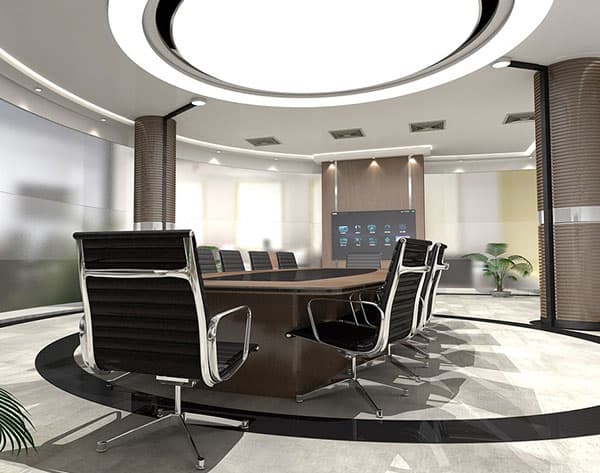
26. Just as employees should be asked for feedback on factors such as lighting, the importance of maintaining good lighting in the office should also be impressed upon them. They should be made aware of the electricity consumed by the different types of lights and of ways in which they can contribute to saving power by adjusting and/ or switching off sources of light when not in use. The company should also request employees to keep an eye out for lights that are flickering or don’t seem to be working, particularly in areas such as the parking lot and in rooms containing potentially dangerous objects/ equipment.
27. Consider having a lighting control system installed for your office. This will help in utilizing lighting sources more optimally, saving power and thus saving money. Further, with a lighting control system in place, all the lights fixed in your office will be included in that one system and will make the entire process of monitoring and using the lighting, much simpler. The system will also be able to provide comprehensive information and reports on which lighting sources are consuming more electricity, which ones are used most often and so on. Ensure that the control system is also cognizant of current or preferably potential damages to lighting sources, such as blown fuses, etc, so that the safety of the office and employees is better guaranteed.
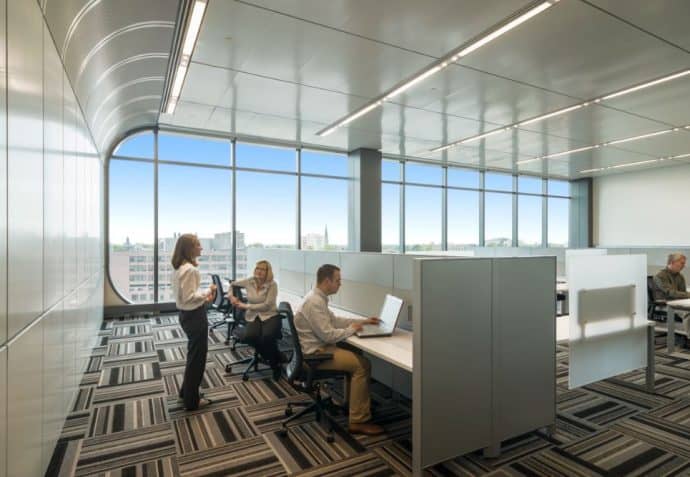
28. Floor lighting is another component of office lighting. Not many offices have started using this type of lighting yet as it may seem unnecessary and can add to costs. But it is something to consider particularly if the company wants to concentrate on providing custom lighting options to each employee at the workstation. While that sounds a bit much, employee productivity can rise substantially with such a step as each individual can work with the lighting that suits them best without disrupting the overall lighting of the office.
29. Look for the lux value of the lights when you are selecting them for the office. Simply understand, lux value is the amount of intensity with which a light hits a certain surface, varying with distance. Experts say that the more light and brightness a task requires, the higher the lux value of the lights should be. For offices, it is recommended that light sources have at least 500 lux value for the necessary brightness.
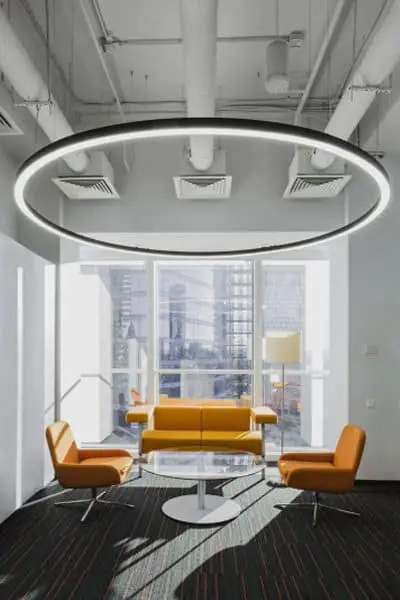
30. If the office space is vast and spread out, including several pathways and corridors, the company can make use of strip lighting on the floor or along the walls to serve as a guide for people passing through the office. Creative lighting forms can be used here, such as lit arrows, string lights and so on. Such lighting also adds a signature style, grace and a certain class to the office space.
31. While every employee may have different lighting requirements for work, companies should consider taking care of such needs for particular employees. Not just employees with sensitive eyes or migraine tendencies, those who are senior in age may also need different kind of lighting to work well. This also makes the need for customizable lighting even more prominent and useful in the long run.
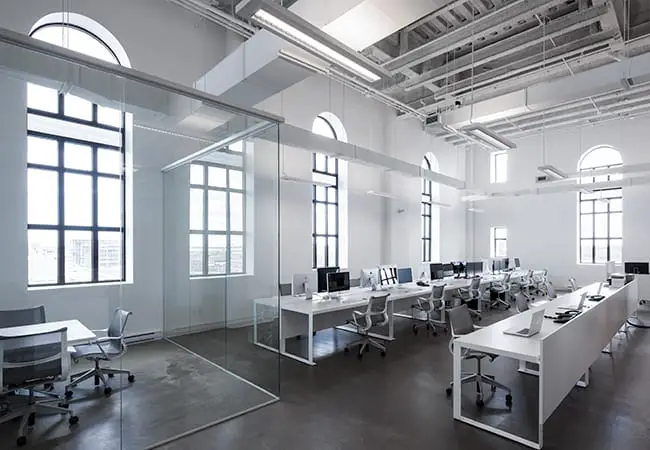
32. When fixing lighting, specifically lighting systems, remember to check about colour rendering. The higher the Colour Rendering Index of a lighting source, the better it is able to render colours of objects as realistically as they would look in natural light. Good colour rendering will also be soothing and easy on the employees’ eyes and will display colours correctly on nearby screens as well. Preferably, lights with CRI of 85-90 should be used to keep the indoors environment looking as natural as possible.
33. Those in charge of lighting should always keep an eye out if they need to renovate the lighting system or make some changes. It may so happen that the lighting is sometimes too much for a certain area and is causing reflective glare. In such a case, it can become necessary to actually remove that lighting from there. Don’t be afraid of costs related to lighting renovation, as the results will lead to improved lighting facilities, and in turn, improved productivity.
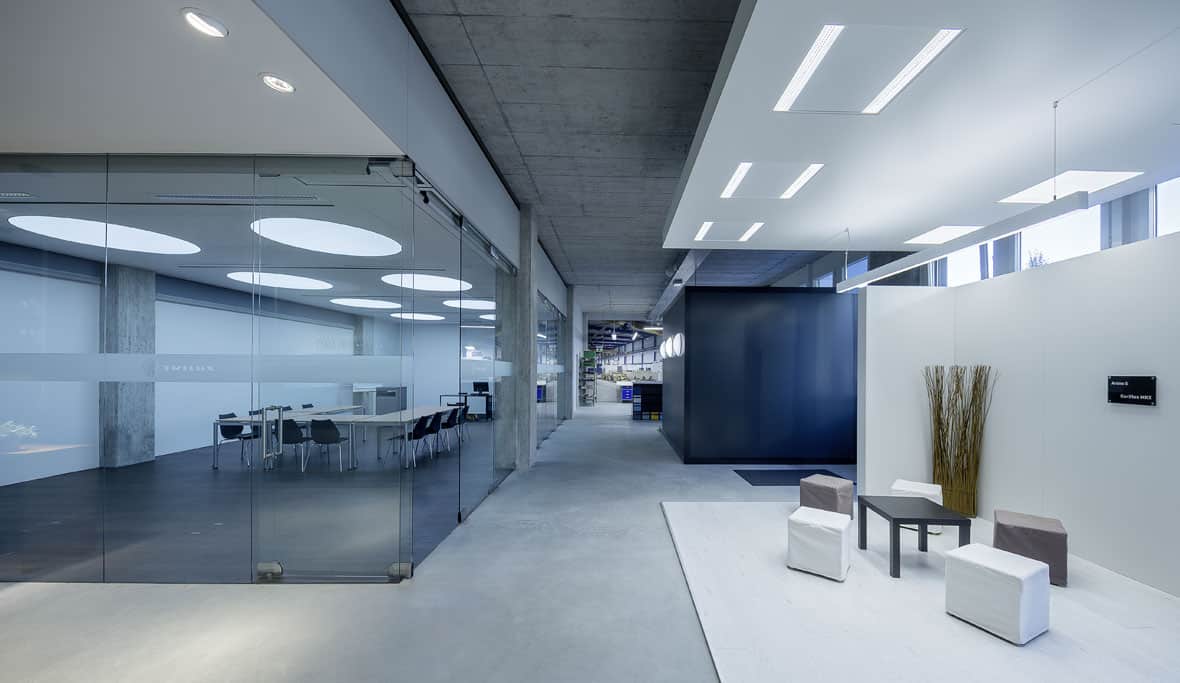
34. The idea behind lighting is to use variety. A combination of direct and indirect lighting, task lights in some places and ambient lights in others, makes for adequate and conducive lighting in the office. The key is to ensure that different kinds of lighting are used depending on the part of the office and the lighting requirements.
35. One final thing to remember is that your office lighting, its forms and colours and the way it is all placed, should, like all other décor and components of your office space, represent the company’s brand and image as far as possible. Every company has a theme and based on that, it can have furniture, décor and lighting as well. You can experiment with simple lighting from table lamps to overheads, and with more sophisticated sources as well, such as spotlights and chandelier for the reception area. Lighting is not just about requirement; it is also about aesthetics and pleasing visuals.
Office Lighting and Energy Efficiency
When lighting is being discussed with regards to the workplace, energy saving and optimal utilization also comes into play. Lighting and energy savings go hand in hand for all office premises. Energy optimization is a key factor that should be taken into consideration when lighting is being chosen and then later during the use of such lights as well. As it is, an office is a much bigger space than a residence in general and is used by many people for prolonged periods of time. In such a case, it is obvious that a lot of electricity is consumed regularly and there must be ways to minimize that without compromising on the quality of facilities provided. Thus office lighting best practices also include managing and conserving energy used by these lights on a daily basis.
1. One major energy-conserving measure that can be taken with respect to lights in the office is fixing lights that operate by sensor. These lights switch on when a person enters a space or a room and switch off shortly after they are gone. This is a good idea particularly in the office washroom where people generally go in turns. It is also a good lighting solution for areas less frequented. These days, motion-detector based sensor lights are being used more often to preserve power.
2. Another good practice is to ensure that wherever sensor lights are not used and lights have to be switched on and off manually, employees make it a habit to do so every time they leave the room- this is particularly in the context of pantry/coffee room, recreation room, etc, in which there is generally a lower number of people at any given point and that may be a vacant space.
3. If the office already has fluorescent lighting installed, the switch to LED lighting must be made soon to conserve energy as well as protect employee health and boost work productivity. It is suggested that the fluorescent lights be switched in favour of 18-watt T8 LED lights, as a start. Over time, one can upgrade to more efficient light sources.
4. Spread awareness among employees about energy saving and optimal light utilization. It is also a good practice to keep abreast of new technologies and new kinds of light sources available. Another good practice to conserve energy while using new sources of lighting is to update employees about the same if they are being used in the office. If the employees have enough knowledge about how the lights work and what their exact functions are, they will also be able to contribute to saving power and utilizing the lights optimally.
Related Questions
How can good lighting be supplemented by other practices/ office layout? Good lighting conditions are necessary for employees to perform well, but lighting alone cannot do wonders if certain practices are not followed alongside. For instance, no amount of artificial lighting can do any good if workstations/cubicles are set in such a way that they are crowded together and there is hardly any space in between. Along with ambient lighting, office seating should be planned carefully according to the overall layout provided. Another pointer is to do with the type and colour of paint used for the office walls. Glossy finishes create more glares from the overhead lights and are thus detrimental for the employees’ work environment. Lastly, an open plan setup is best for the office space and will help in better planning for lighting.
should be planned carefully according to the overall layout provided. Another pointer is to do with the type and colour of paint used for the office walls. Glossy finishes create more glares from the overhead lights and are thus detrimental for the employees’ work environment. Lastly, an open plan setup is best for the office space and will help in better planning for lighting.
What are some lighting tips for home office space? One of the advantages of having an office space in your own home is that you get to make most of the decisions regarding seating, desk positioning, choice of furniture, lighting, etc. As residences have different layouts, smaller and more room-oriented than offices, the chances of more natural lighting are higher. Try to position your desk and workspace close to the source of natural light, likely a window, but make sure your screen faces away from the direct light, to avoid glare. Because of the smaller space, you won’t need as many artificial lights, but it is recommended to keep a flexible desk lamp when you need task lighting- but not to use it too often. These days there are many LED desk lights that help avoid strain on eyes and are easily adjustable. It is also advisable to install a few small overhead lights which you can keep on for most of the time you are working, and to ensure that the lights are warm-toned, white and bright.

